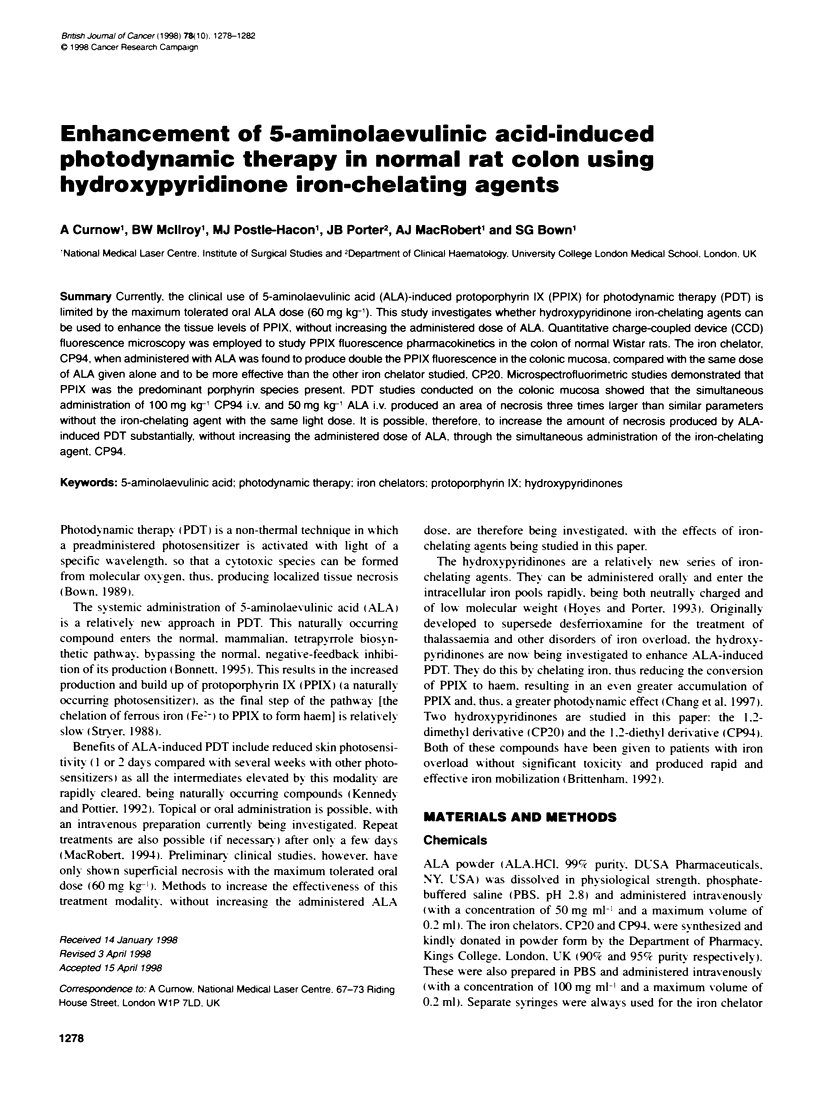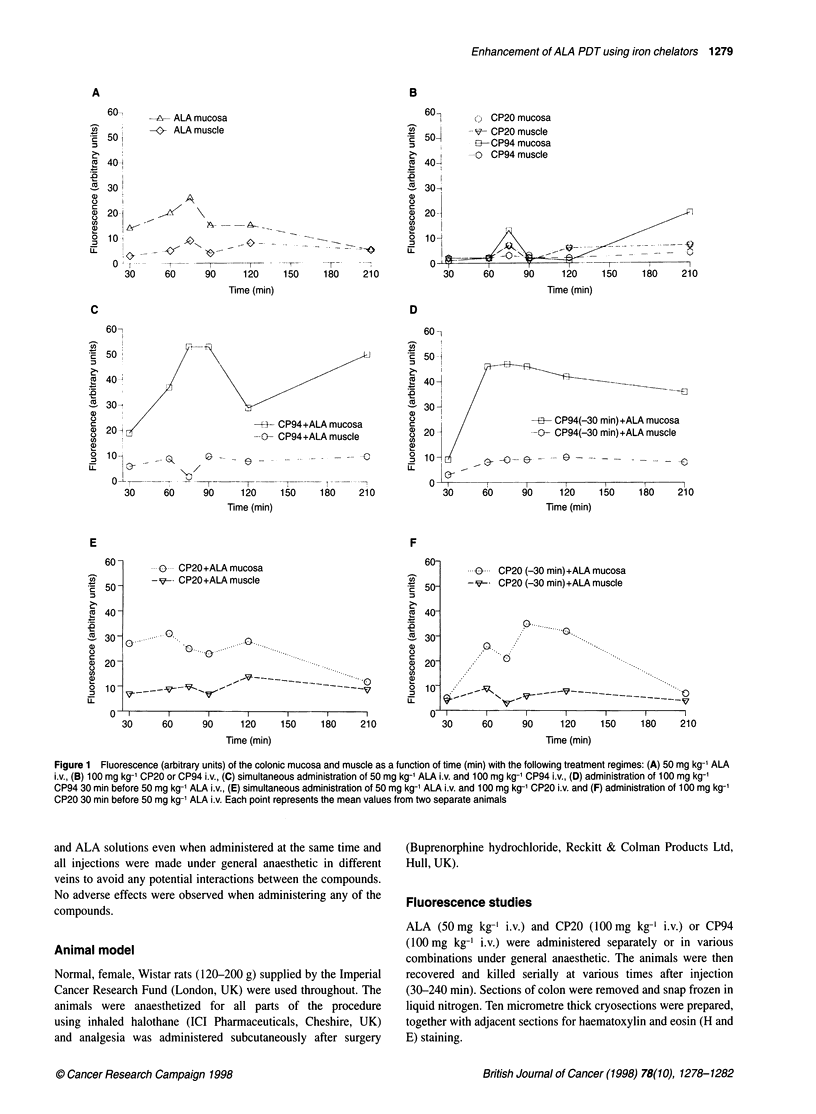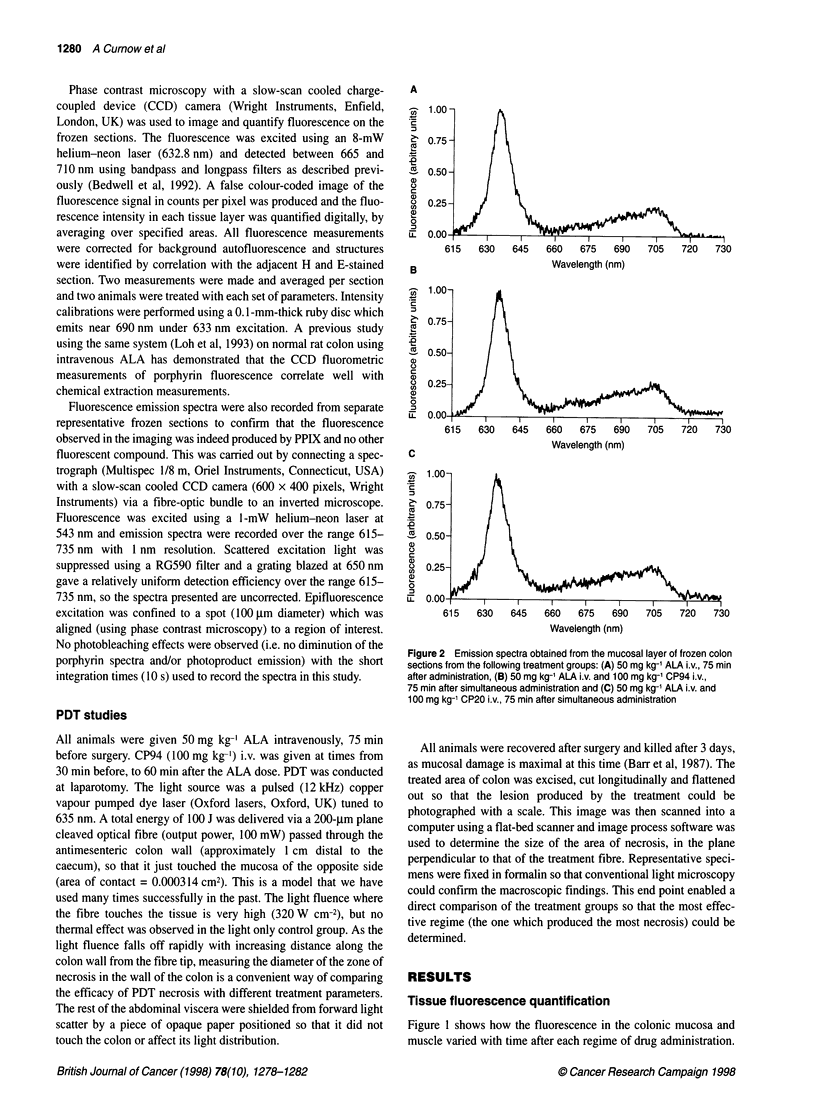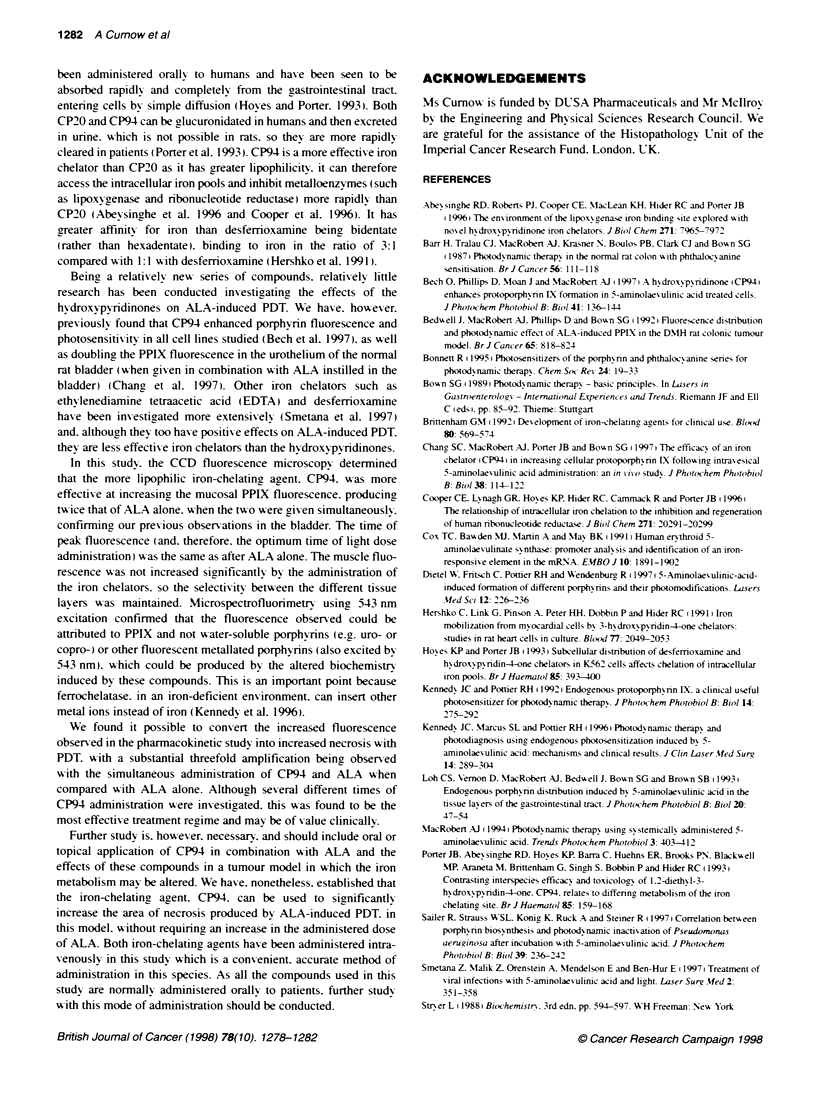Abstract
Currently, the clinical use of 5-aminolaevulinic acid (ALA)-induced protoporphyrin IX (PPIX) for photodynamic therapy (PDT) is limited by the maximum tolerated oral ALA dose (60 mg kg(-1)). This study investigates whether hydroxypyridinone iron-chelating agents can be used to enhance the tissue levels of PPIX, without increasing the administered dose of ALA. Quantitative charge-coupled device (CCD) fluorescence microscopy was employed to study PPIX fluorescence pharmacokinetics in the colon of normal Wistar rats. The iron chelator, CP94, when administered with ALA was found to produce double the PPIX fluorescence in the colonic mucosa, compared with the same dose of ALA given alone and to be more effective than the other iron chelator studied, CP20. Microspectrofluorimetric studies demonstrated that PPIX was the predominant porphyrin species present. PDT studies conducted on the colonic mucosa showed that the simultaneous administration of 100 mg kg(-1) CP94 i.v. and 50 mg kg(-1) ALA i.v. produced an area of necrosis three times larger than similar parameters without the iron-chelating agent with the same light dose. It is possible, therefore, to increase the amount of necrosis produced by ALA-induced PDT substantially, without increasing the administered dose of ALA, through the simultaneous administration of the iron-chelating agent, CP94.
Full text
PDF




Selected References
These references are in PubMed. This may not be the complete list of references from this article.
- Abeysinghe R. D., Roberts P. J., Cooper C. E., MacLean K. H., Hider R. C., Porter J. B. The environment of the lipoxygenase iron binding site explored with novel hydroxypyridinone iron chelators. J Biol Chem. 1996 Apr 5;271(14):7965–7972. doi: 10.1074/jbc.271.14.7965. [DOI] [PubMed] [Google Scholar]
- Bedwell J., MacRobert A. J., Phillips D., Bown S. G. Fluorescence distribution and photodynamic effect of ALA-induced PP IX in the DMH rat colonic tumour model. Br J Cancer. 1992 Jun;65(6):818–824. doi: 10.1038/bjc.1992.175. [DOI] [PMC free article] [PubMed] [Google Scholar]
- Cooper C. E., Lynagh G. R., Hoyes K. P., Hider R. C., Cammack R., Porter J. B. The relationship of intracellular iron chelation to the inhibition and regeneration of human ribonucleotide reductase. J Biol Chem. 1996 Aug 23;271(34):20291–20299. doi: 10.1074/jbc.271.34.20291. [DOI] [PubMed] [Google Scholar]
- Cox T. C., Bawden M. J., Martin A., May B. K. Human erythroid 5-aminolevulinate synthase: promoter analysis and identification of an iron-responsive element in the mRNA. EMBO J. 1991 Jul;10(7):1891–1902. doi: 10.1002/j.1460-2075.1991.tb07715.x. [DOI] [PMC free article] [PubMed] [Google Scholar]
- Hershko C., Link G., Pinson A., Peter H. H., Dobbin P., Hider R. C. Iron mobilization from myocardial cells by 3-hydroxypyridin-4-one chelators: studies in rat heart cells in culture. Blood. 1991 May 1;77(9):2049–2053. [PubMed] [Google Scholar]
- Hoyes K. P., Porter J. B. Subcellular distribution of desferrioxamine and hydroxypyridin-4-one chelators in K562 cells affects chelation of intracellular iron pools. Br J Haematol. 1993 Oct;85(2):393–400. doi: 10.1111/j.1365-2141.1993.tb03184.x. [DOI] [PubMed] [Google Scholar]
- Kennedy J. C., Pottier R. H. Endogenous protoporphyrin IX, a clinically useful photosensitizer for photodynamic therapy. J Photochem Photobiol B. 1992 Jul 30;14(4):275–292. doi: 10.1016/1011-1344(92)85108-7. [DOI] [PubMed] [Google Scholar]
- Porter J. B., Abeysinghe R. D., Hoyes K. P., Barra C., Huehns E. R., Brooks P. N., Blackwell M. P., Araneta M., Brittenham G., Singh S. Contrasting interspecies efficacy and toxicology of 1,2-diethyl-3-hydroxypyridin-4-one, CP94, relates to differing metabolism of the iron chelating site. Br J Haematol. 1993 Sep;85(1):159–168. doi: 10.1111/j.1365-2141.1993.tb08660.x. [DOI] [PubMed] [Google Scholar]


